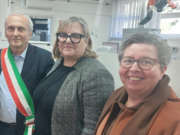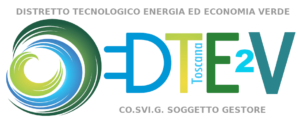DTE²V – Technology Cluster on Energy and Green Economy of the Tuscany Region
Since 2016, Co.Svi.G. is the managing body of the Technology Cluster on Energy and Green Economy (DTE²V) of the Tuscany Region.
DTE²V is an organization of independent Economic and Research operators coordinated through a public-private governance, which was established by the Region of Tuscany. The main aim of the cluster is to increase the competitiveness of Tuscan companies operating within the Energy and Green Economy sectors and to promote the industrial research and technology transfer in these fields. The DTE²V consists currently of around 200 members, including leading companies form the energy sector and operating Tuscany, MSMEs, Start Ups, Universities, Research Centres, Laboratories, Trade Associations, Technology and Innovation Networks and Non-Profit groups.
The DTE²V acts, therefore, as a bridge between research and companies, in order to promote their innovation capacities and competitiveness in the market.
DTE²V Cluster support the launch and development of cooperation networks, facilitating technology transfer, access to national programmes and engaging members into actively collaborating and sharing expertise and Know How pursuing innovation
Regarding the strategic operating plan, the DTE²V works on 4 main operational objectives:
- Technology dissemination: technology Forecast and Foresight Analysis to better understand and predict future developments of markets and technologies, within the Energy sector at local, regional, national and international level;
- Business Matching/Matchmaking (B2B, R2B, F2B): to promote the matching and connection amongst economic operators. Its objective is to foster technological innovation, adoption of better marketing strategies and to approach to new potential markets and business opportunities;
- Creation and enhancement of know-how and professional expertise within each reference sector;
- Search for funding opportunities for innovation: to support the dissemination of financing opportunities, improve admission rates and foster the Regional systems towards even more potential resources, for better industrial policies.
Co.Svi.G.-DTE²V works closely with the main public institutions and stakeholder from research sector, companies, civil society organizations and citizens in order to promote and disseminate initiatives linked to the achievement of the climate and energy targets objectives provided for European Green Deal.



































